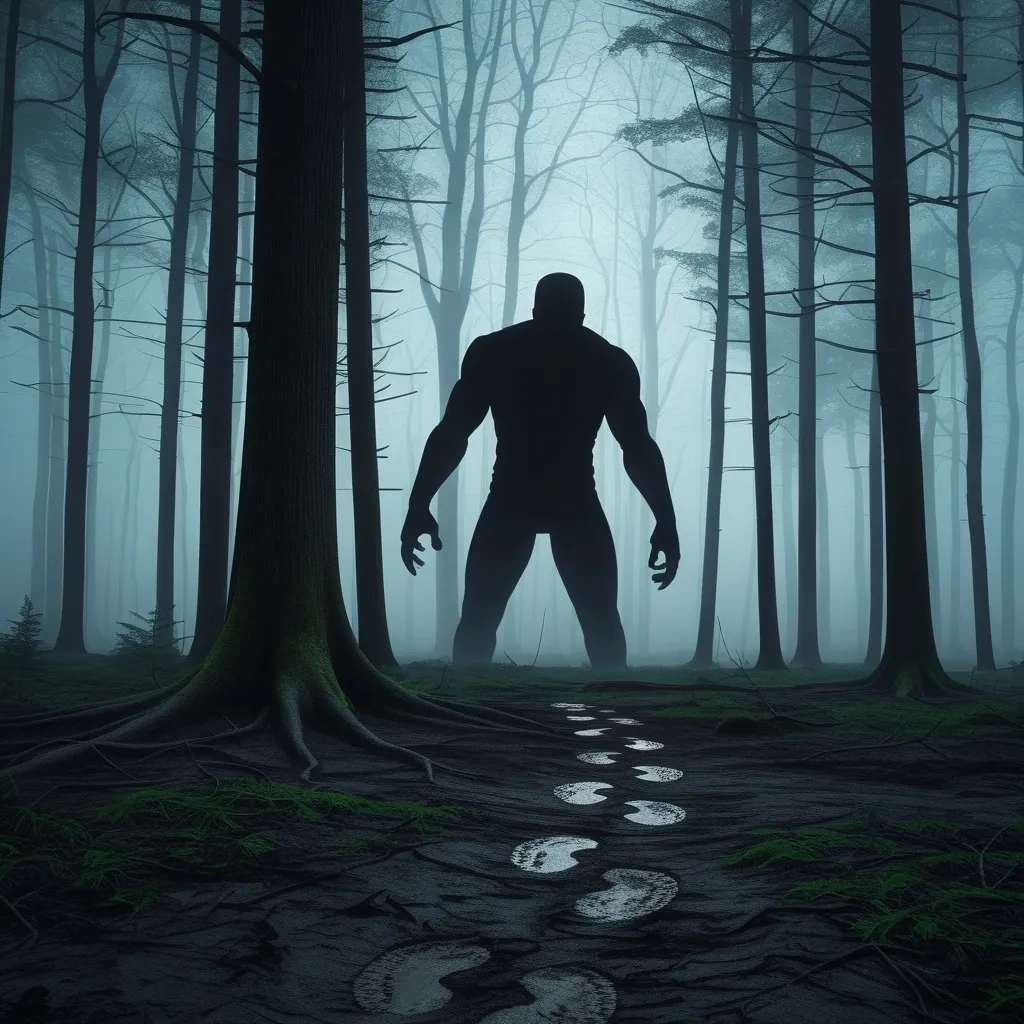The Legend of Bigfoot: Unraveling the Mystery of North America’s Elusive Giant
Deep in the misty forests of North America, particularly the Pacific Northwest, a captivating legend has been brewing for centuries. It’s the tale of Bigfoot, also known as Sasquatch, a mysterious ape-like creature that has sparked fascination, fear, and skepticism in equal measure.
Imagine wandering through a dense forest, the mist swirling around your feet, when suddenly you hear a twig snap behind you. You turn, and for a split second, you catch a glimpse of something large and hairy disappearing into the shadows. Was it just a bear? Or could it be the legendary Bigfoot?
The name “Sasquatch” itself has an interesting origin. It comes from the Salish word “Sasq’ets,” which roughly translates to “wild man” or “hairy man.” This name paints a vivid picture of the creature: a large, hairy, bipedal being standing anywhere from 6 to 15 feet tall. Some say it emits a foul odor, while others claim it moves with eerie silence or lets out high-pitched cries.
The history of Bigfoot sightings is as intriguing as the creature itself. As far back as 1811, British explorer David Thompson reported finding enormous footprints in the wilderness. Can you imagine stumbling upon footprints so large they couldn’t possibly belong to any known animal?
But it wasn’t until the late 19th and early 20th centuries that Bigfoot really started to capture the public imagination. In 1924, a group of gold prospectors on Mount St. Helens claimed they were attacked by “gorilla men.” While this story was later discredited, it added fuel to the growing Bigfoot fire.
The modern Bigfoot phenomenon really took off in the late 1950s. Picture this: you’re reading your local newspaper in Northern California in 1958, and there’s a story about giant, mysterious footprints found near Bluff Creek. Wouldn’t that get your heart racing? Although these footprints were later revealed to be a prank, the seed of the Bigfoot myth had been firmly planted.
Since then, there’s been a flood of alleged Sasquatch sightings, footprints, photographs, and videos. One of the most famous pieces of “evidence” is the Patterson-Gimlin film from 1967. It shows what appears to be a large, hairy bipedal creature walking through a clearing. While many believe it’s just a person in a costume, the debate rages on to this day.
Bigfoot has become a pop culture icon, starring in countless movies, books, and even commercials. There’s something about this creature that captures our imagination. Maybe it’s the idea that there could be something out there that’s not quite human, not quite animal, but something in between.
Some folks have come up with wild theories about Bigfoot’s origins. Could it be a remnant of Neanderthals or other extinct human relatives? While these ideas might make for great campfire stories, they’re not backed up by any scientific evidence.
It’s fascinating to note that many Indigenous cultures across North America have long included stories of mysterious, hair-covered creatures in their folklore. The Nlaka’pamux tribe in British Columbia, for example, has tales of a “Hairy Man” that go back centuries. These stories often portray the creature as both scary and kind, reflecting the complex relationship between humans and nature.
Now, I know what you’re thinking. What does the scientific community have to say about all this? Well, they’re pretty skeptical, to say the least. No bodies, bones, or other physical evidence have ever been found to support Bigfoot’s existence. In fact, many alleged Bigfoot sightings can be explained by known animals like black bears. Have you ever seen a black bear standing on its hind legs? It can look pretty intimidating!
But here’s an interesting tidbit that might explain why the idea of a giant ape-like creature resonates so deeply with us. There used to be a species called Gigantopithecus blacki, an extinct giant ape that lived in Southeast Asia. This beast was around 10 feet tall and weighed up to 595 pounds! While it went extinct hundreds of thousands of years ago, the discovery of its fossils might have inspired stories of large human-like creatures in various cultures.
Despite the lack of scientific evidence, there are still plenty of Bigfoot enthusiasts out there who are convinced the creature exists. In Oregon, there’s even a Sasquatch trap in the Siskiyou National Forest. Can you imagine stumbling upon that while hiking?
Speaking of hiking, if you’re ever in the mood for a Bigfoot-themed adventure, check out the Bigfoot Trail. It’s a hiking route that spans parts of northwest California and southwest Oregon, areas known for their high number of reported Bigfoot sightings. Who knows? Maybe you’ll be the one to finally snap that clear photo of Sasquatch!
For those who believe in Bigfoot, the creature represents more than just a mysterious beast. It’s a connection to the wild, to the unknown. It symbolizes the idea that there are still unexplored corners of our world where mysteries await discovery. Even if we never find concrete proof of Bigfoot’s existence, the legend itself serves as a reminder of our deep-seated fascination with nature and the mysteries it holds.
Think about it: in this age of Google Earth and GPS, where it feels like every inch of our planet has been mapped and explored, isn’t it thrilling to think there might still be something out there we don’t understand? Something that eludes our cameras and evades our traps?
The enduring appeal of Bigfoot lies in this very mystery. It taps into our primal sense of wonder about the natural world. It’s a reminder that no matter how advanced our technology becomes, nature still has secrets to keep.
In the end, whether or not Bigfoot actually exists is almost beside the point. The legend has taken on a life of its own, becoming a part of our cultural landscape. It’s a story we tell around campfires, a creature we imagine lurking just beyond the treeline when we’re out in the woods.
The Bigfoot myth also serves as a kind of modern folktale, teaching us about our relationship with nature and the unknown. It reminds us to respect the wilderness and approach it with a sense of awe and humility. After all, if a creature as large as Bigfoot could potentially hide from us for so long, what else might be out there that we don’t yet understand?
Moreover, the search for Bigfoot has led to some unexpected benefits. Bigfoot researchers, whether they realize it or not, often end up doing valuable ecological research. They document wildlife, track changes in the forest, and sometimes even discover new species (albeit, smaller ones than they were hoping for).
The legend of Bigfoot also brings people together. There are countless Bigfoot enthusiast groups, conferences, and expeditions. These gatherings allow people to share their experiences, debate theories, and forge friendships. In a world that can often feel divided, isn’t there something beautiful about people coming together over a shared interest, even if it’s as unconventional as searching for a cryptid?
As we continue to venture into the depths of our forests and the recesses of our minds, the legend of Bigfoot will likely endure. It’s a testament to the enduring power of myth and mystery, a reminder that there’s still magic in the world if we’re willing to look for it.
So the next time you’re out in the woods and you hear an unexplained rustle in the bushes or catch a whiff of an unfamiliar scent on the breeze, allow yourself a moment of wonder. Maybe, just maybe, it’s Bigfoot. And even if it’s not, isn’t it fun to imagine?






